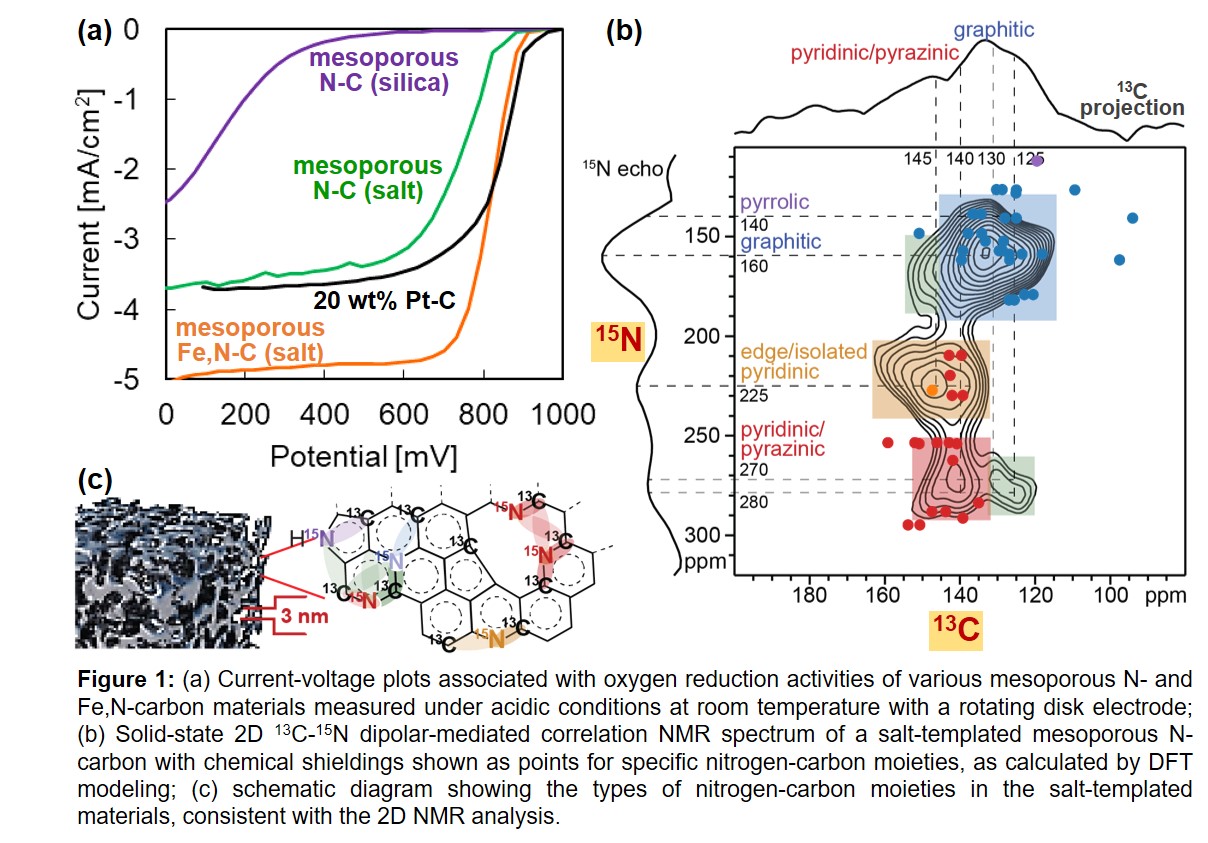Mesoporous N- and Fe,N-carbons exhibit high electrocatalytic activities comparable to activated-carbon-supported-Pt electrocatalysts. Their favorable properties include high nitrogen contents that increase the number of active moieties, selective formation of N moieties at surface sites, large (3 nm) mesopores to promote diffusion, and electron conductivity to surface N environments where reactions occur. This is evident in the current-voltage plots for N- and Fe,N-mesoporous carbons compared to 20 wt% Pt-C (Figure 1a), which show higher oxygen reduction activity for salt- versus silica-templated materials.
While inclusion of N-heteroatoms improves carbon-based electrocatalyst reduction activity,1 the atomic-level origins of such properties have remained elusive. Nevertheless, two-dimensional 13C-15N NMR spectra (Figure 1b) resolve signals from four distinct types of N-heteroatom environments (Figure 1c): pyrrolic, graphitic, edge/isolated pyridinic, and pyrazinic/pyridinic moieties, the quantities of which vary by porogen and account for different O2 reduction activities.2 Chemical shift assignments are corroborated by DFT, with points corresponding to different structural motifs overlaying the spectrum. Importantly, 15N{1H} NMR spectra enable surface N species to be selectively distinguished from interior moieties via interactions with adsorbed water. These analyses establish that certain types of N-carbon moieties are more important to electrocatalytic performance than others. Incorporation of non-precious transition-metals (e.g., Fe) significantly increases electrocatalytic activity, which have been challenging to explain.3,4 Nevertheless, 57Fe Mössbauer spectra, solid-state 15N NMR spectra, and spin-lattice relaxation-time analysesresolve signals from 15N species that are proximate to paramagnetic Fe-heteroatoms, from which 15N-Fe distances are estimated. Understanding the roles of N-carbon moieties in electrocatalytic reduction yields new design criteria for syntheses of high performance non-precious-metal electrocatalysts with diverse fuel cell and battery applications.
(1) Gong, et al., Science 2009, 323, 760.
(2) Becwar, et al., submitted.
(3) Kim, et al., ACS Appl. Mater. Interfaces 2018, 10, 25337.
(4) Al-Zoubi, et al., J. Am. Chem. Soc. 2020, 142, 5477.


